Bulbing flowers are special, but spreading ones that multiply underground are indispensable in the garden! They’ll help battle soil erosion with roots that lock onto particles. Their flowers often attract pollinators, especially if they’re from native bulbs. For us gardeners, these plants have little maintenance and spread readily for easy caretaking.
Many bulbs grow best from fall plantings—they sit below the ground during winter and erupt into bloom as spring sunshine and warmth arrive. These spring ephemerals often die back by the time summer arrives to save themselves from excessive heat. Other species bloom later in the growing season and fade away by late summer or fall. Grow a mix of both and you’ll have blooms year-round!
Some of these bulbs are native plants, while others originate from other continents and perform well in North American gardens. Any of these 15 are excellent options if you’re looking for naturalizing perennials. Plant one or two and watch as they cover bare soil, creating blankets of blooms for you to enjoy.
Fritillaria
Fritillaria plants, or fritillaries, are close relatives of lilies; find their nodding bell-shaped flowers in shades of orange, yellow, purple, and black. The flowers come in various colors and patterns, from purple checkers to black spots.
This bulbing species spreads underground with new bulbs and uses seeds to propagate on the soil’s surface. It’s perfect for native plant lovers, as dozens of species originate from North America. Choose native varieties like checker lily, mission bells, or chocolate lily. They’ll offer valuable pollen and nectar to pollinators while providing you with gorgeous blooms!
Non-native species work well too, and they naturalize in gardens when they’re happy. Try crown imperial bulbs or one of its many varieties for dependable spreading plants. ‘Chopin’ is excellent for reddish blooms, while ‘Lutea’ is the type for those wanting yellow flowers.
Canada Lily
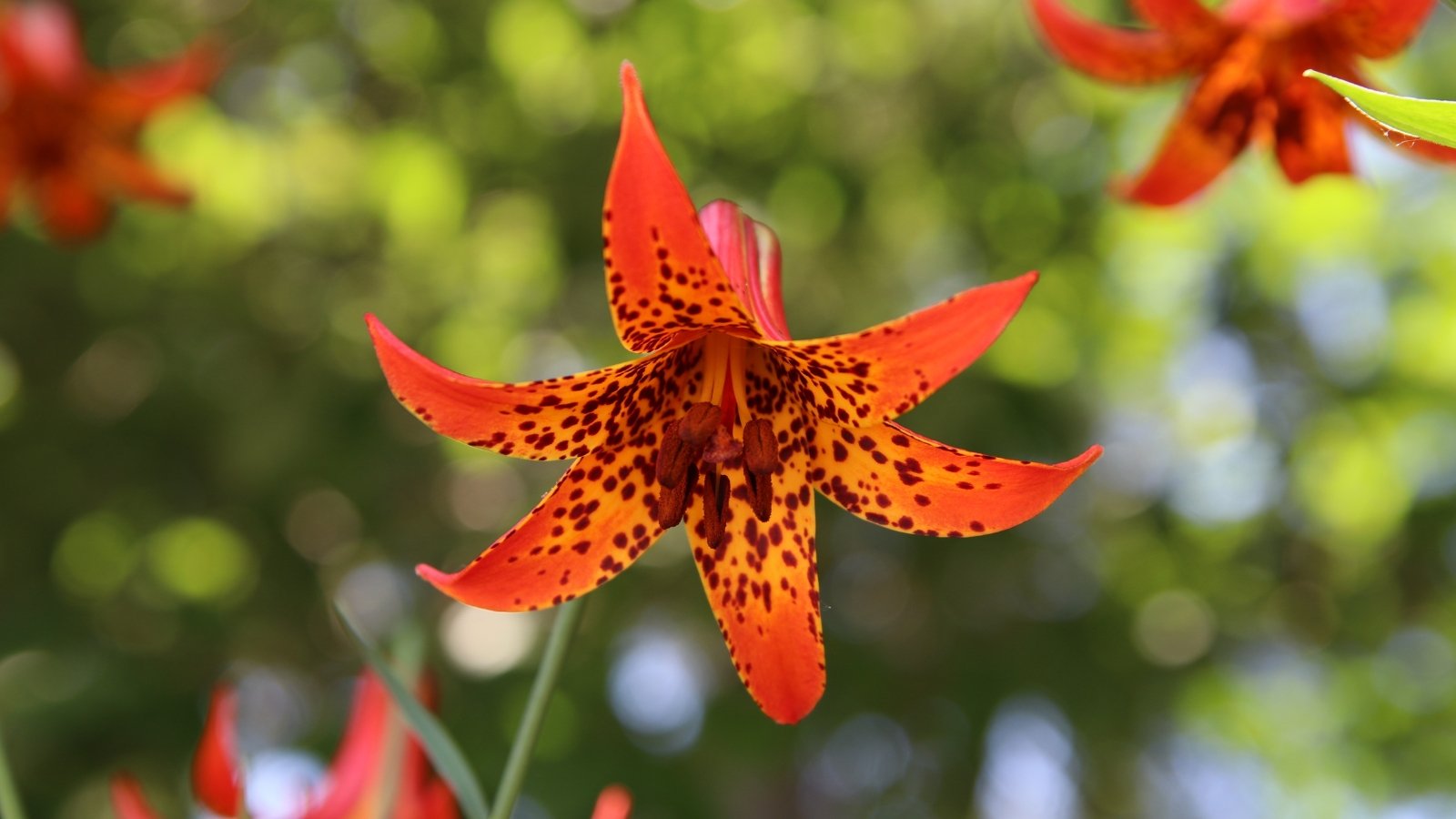
Canada lily is another native bulbing species that loves growing in garden settings. Native bulbs need less care than non-native ones in their range—all they need is natural rainfall and enough sunlight! Plant Canada lily in partial shade or full sun, give it regular water the first year, then wait for spectacular orange-yellow blooms with red dots.
Canada lily originates in parts of eastern North America in meadows, forests, and thickets, preferring moist conditions during the growing season. Unlike non-native lilies, native lilies often have hanging blossoms that orient downwards. They make perfect perches for hungry pollinators while adding woodland charm to ornamental spaces.
A similar species for West Coast gardeners is the Columbian lily. This wild bulb resembles tiger lilies with orange petals and spots throughout. Columbian and Canada lilies prefer moist conditions, however, they’ll rot in soggy soil. Give them porous, airy soil rich in organic matter to encourage more blooms while preventing bulb rot.
Camas
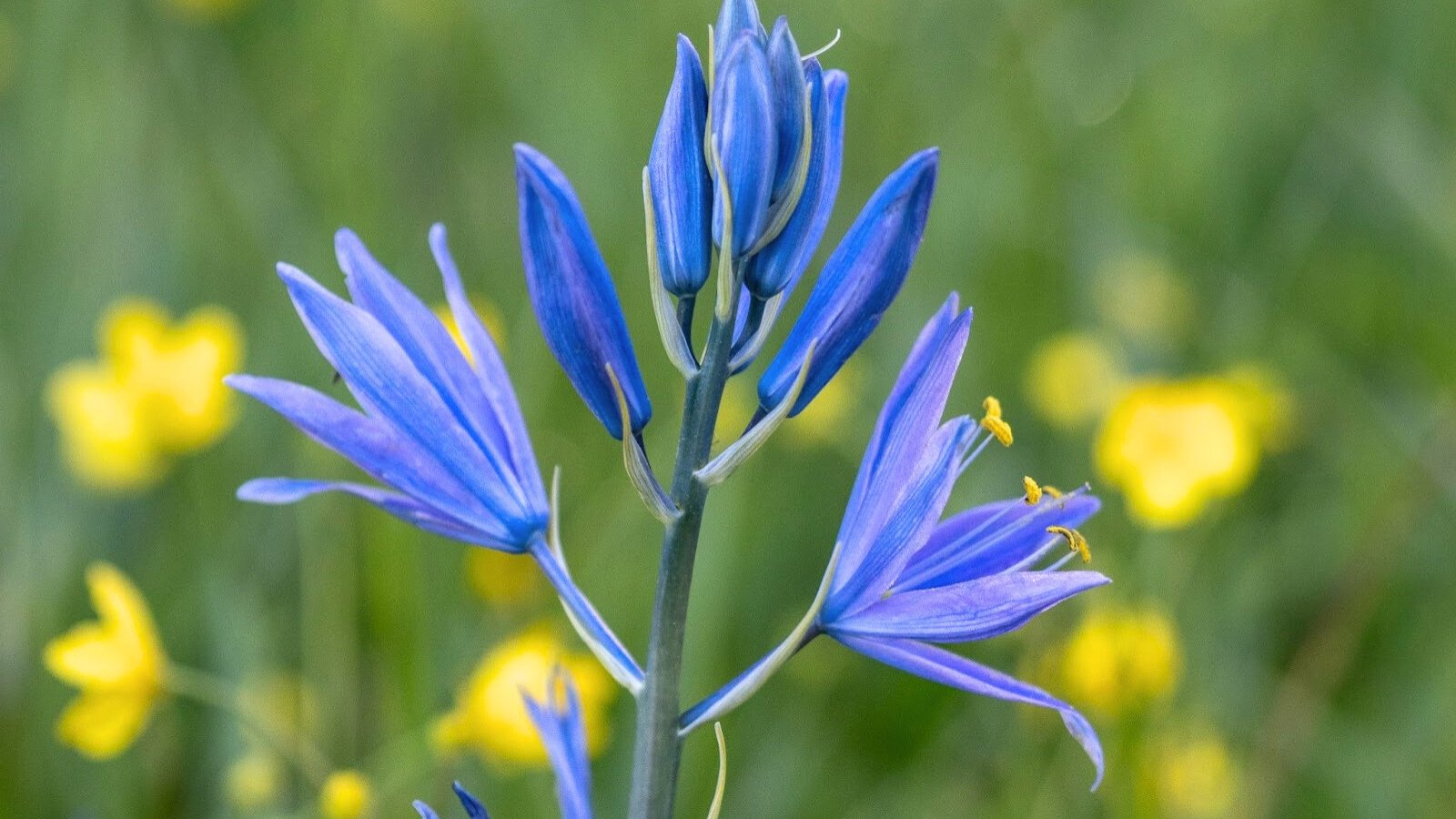
Camas are iconic North American wildflowers! They sprout from nutritious bulbs deep below ground that indigenous groups ate readily near the West Coast. They’re not a common food source today and are best as ornamental plants in pollinator gardens, meadows, and wild plantings.
Avoid eating camas unless they come from your garden and you can properly identify them—harvesting wild populations threatens their survival, and you may confuse them for deadly poisonous look-alikes like the death camas, Zigadenus venenosus. Always be sure you know what you’re harvesting before you consume it.
Camas erupt into bloom in spring and die back before the summer heat arrives. Try greater camas for flower spikes up to four feet tall along the West Coast. Opt for Atlantic camas in the eastern and central U.S. They grow white-lavender blooms on green stems and are hardier than western camas species.
Trillium
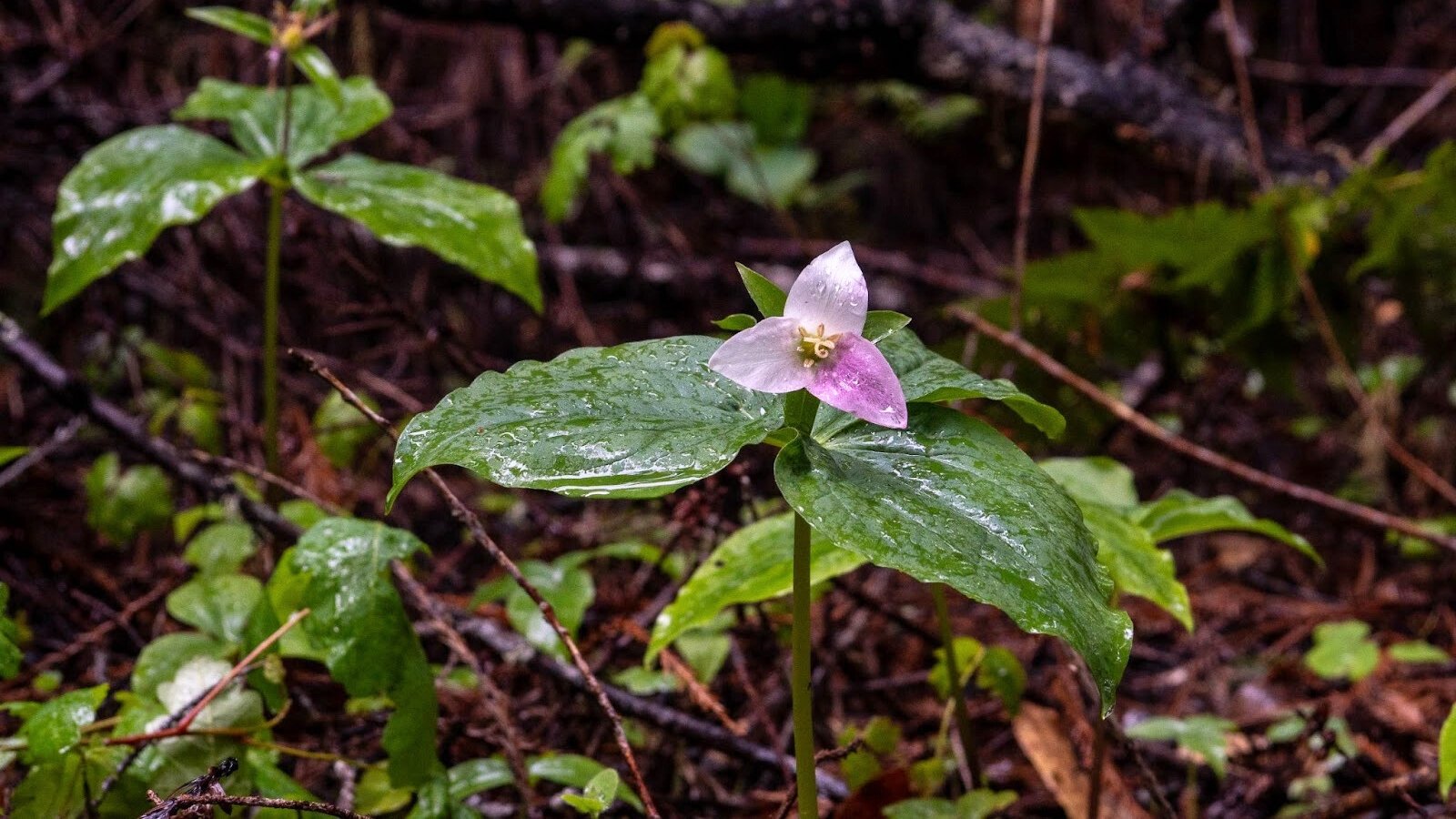
Trillium plants are delightful woodland charmers that slowly spread to fill in bare soil over time. There are dozens of species native to the U.S., and some originate from Asia. No matter which trillium you choose, you’ll enjoy leaves of three that act as a collar for the tri-petalled flowers.
Trilliums come in all shapes and sizes. Some have variegated leaves, while others are plain green. You’ll see them decorate shady forests in mid-spring with white, pink, or red blooms. These plants are unique in that their entire aboveground structure is their flower! The leafy bracts evolved to mimic true leaves, although they’re a part of the flower structure, or “inflorescence.”
After blooming and setting seeds, these bulbs enter dormancy as they suck in nutrients from the aboveground plant parts. Avoid cutting the stems or flowers, as these species rely on them to photosynthesize and create energy for themselves. Enjoy the blooms outdoors as they poke out of the soil while most other plants are dormant.
Spring Beauty
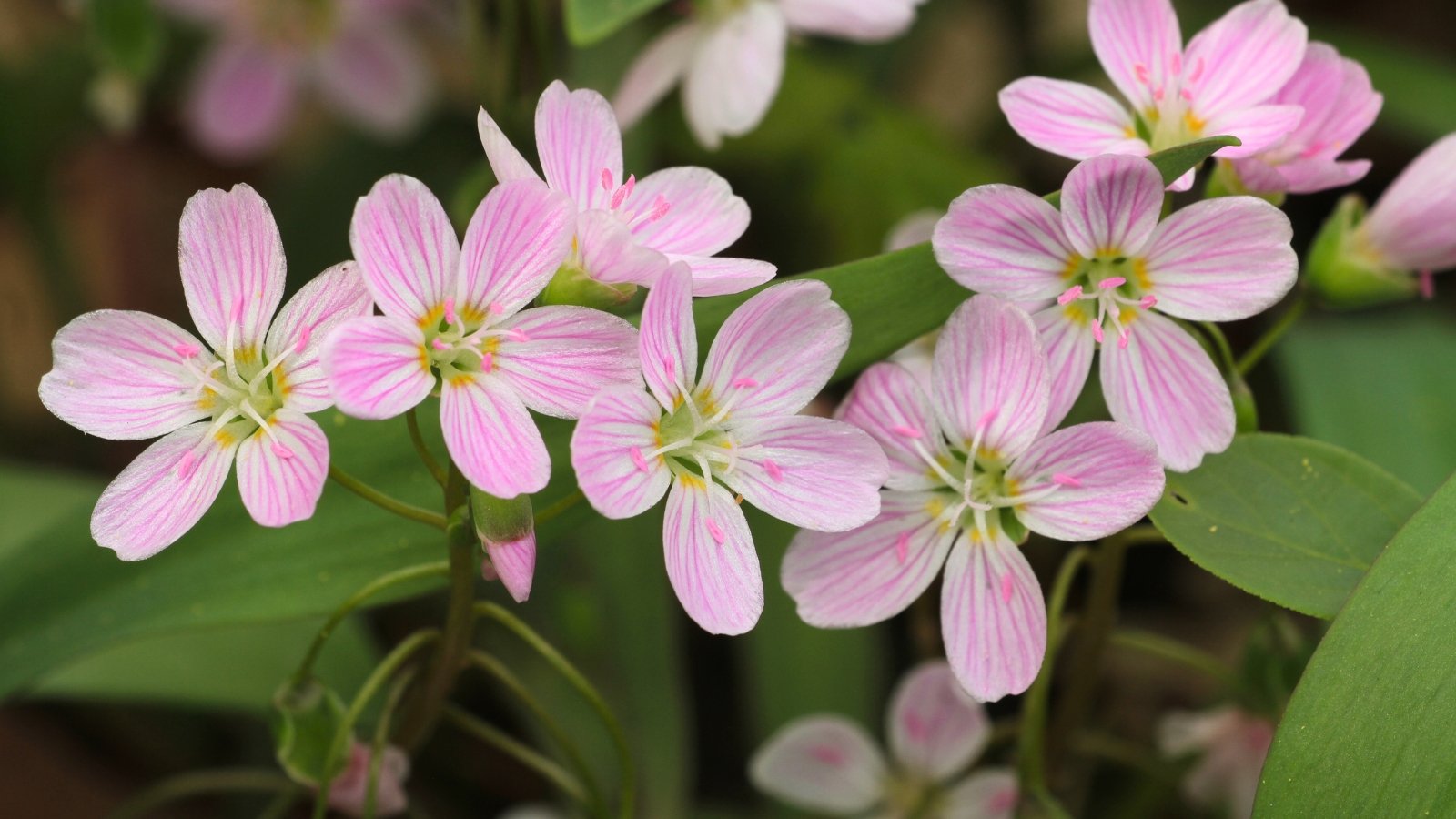
Although small, spring beauty bulbs are hardy, free-spreading, and edible. Plant a few seeds this year and you’ll have swaths of pink candy-striped white blossoms next spring. These perennials emerge from small corms just below the soil’s surface. They’re sensitive to disturbance and best for natural or wild spaces that need spring ephemerals.
Spring beauties emerge around the same time that forget-me-nots erupt into bloom. Grow these native corms instead of forget-me-nots to offer nutritious pollen and nectar to pollinators that need resources.
Spring beauty enters dormancy shortly after flowering, leaving bare soil for summer, fall, and winter. Consider planting other plants that emerge after ephemeral species for year-round beauty. Try lilies, irises, or dahlias—they won’t compete with spring beauties and are perfect for summer and fall blooms.
Western Spring Beauty
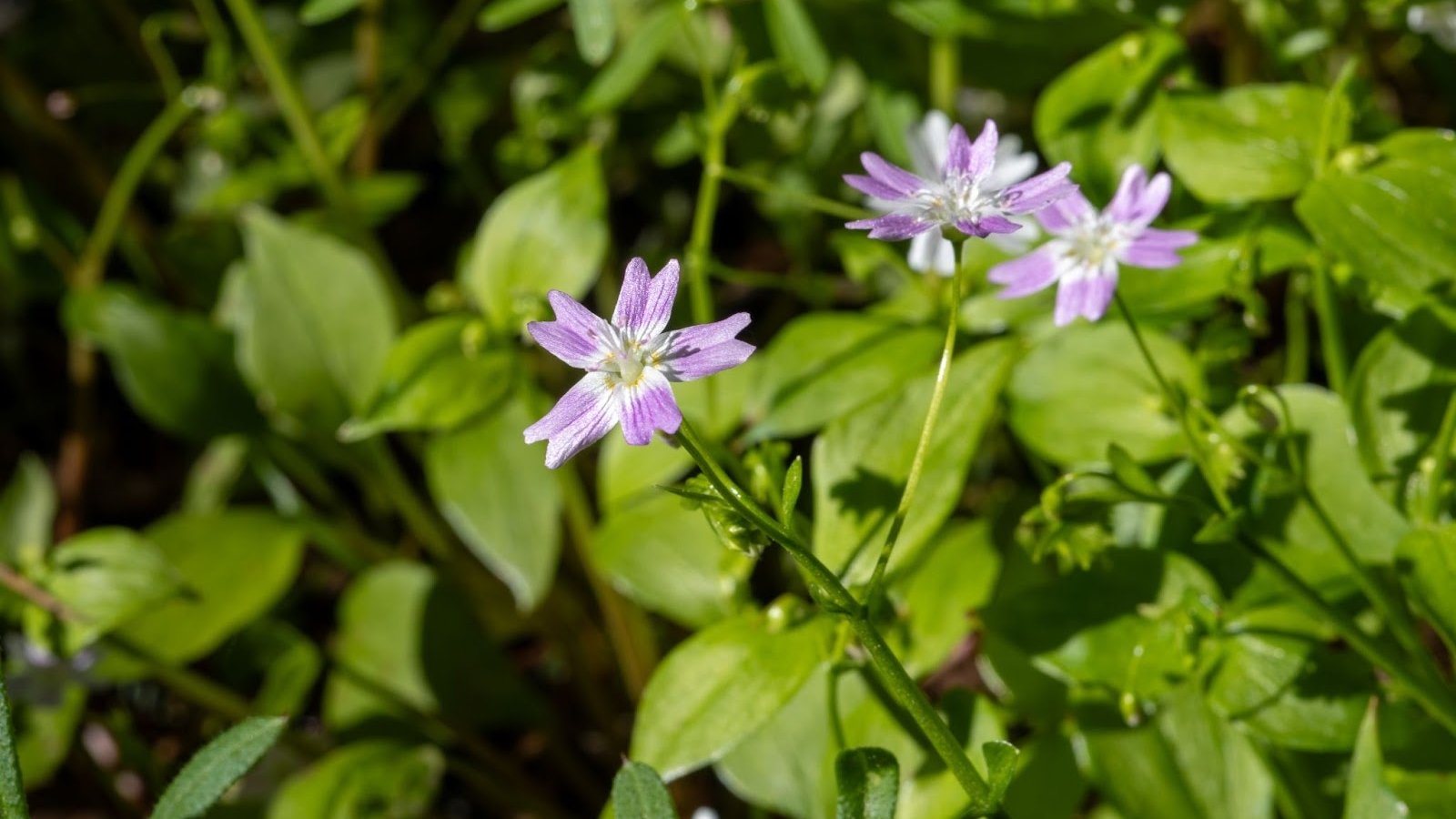
Gardeners on the West Coast are in luck; Western spring beauty is the West’s version of normal spring beauty! It has similar white flowers with pink stripes, and its leaves are shorter and rounder than those of common spring beauties. It also spreads using corms and seeds to cover large areas in shady gardens.
This native bulb pulls energy from its leaves after setting seed in late spring and early summer. You’ll notice they turn yellow-brown before withering away. The plants are ideal spring ephemerals alongside other species like trilliums, fawn lilies, and Calypso orchids. Sow seeds freely this fall and watch as they sprout into seedlings after warm temperatures arrive post-winter.
For maximum spread, avoid walking on or near these fleshy plants. They easily break from their corms. This most likely won’t kill them, but it’ll create space for weedy species to invade. Sow dozens or hundreds of seeds and leave them be; they’ll thrive with minimal disturbance.
Fawn Lily
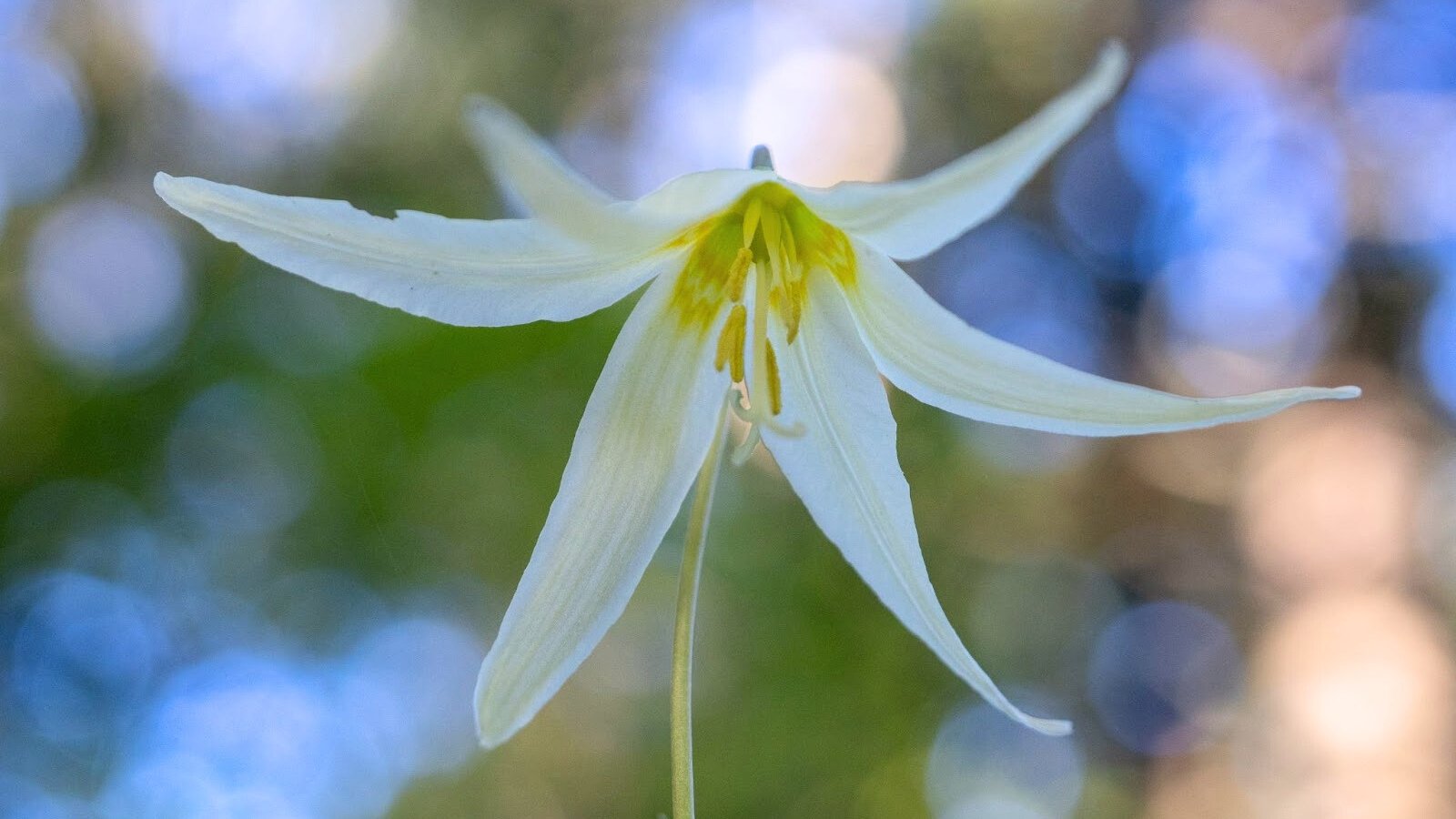
Fawn lilies, or trout lilies, sprout yellow or white blossoms on slender stems above one or two leaves. The leaves are plain green or mottled with purple dots. They emerge before most deciduous trees leaf out, taking advantage of the ample sunlight. Dozens of species thrive in various regions of the U.S., so there’s sure to be an ideal one for your garden.
Pacific Northwest growers can try the white-flowered Oregon fawn lily, Erythronium oregonum. Eastern and central U.S. gardeners should opt for the American fawn lily, E. americanum. The American fawn lily sprouts yellow-petalled flowers and is marginally more cold-hardy than the Oregon type. Other species to try include the California fawn lily and the dogs-tooth violet.
Fawn lilies spread readily after transplanting. They dislike disturbance, so be sure that where you plant them is where you want them to grow. They’ll spread with seeds aboveground and rhizomes belowground, creating large colonies with time.
Glory of the Snow
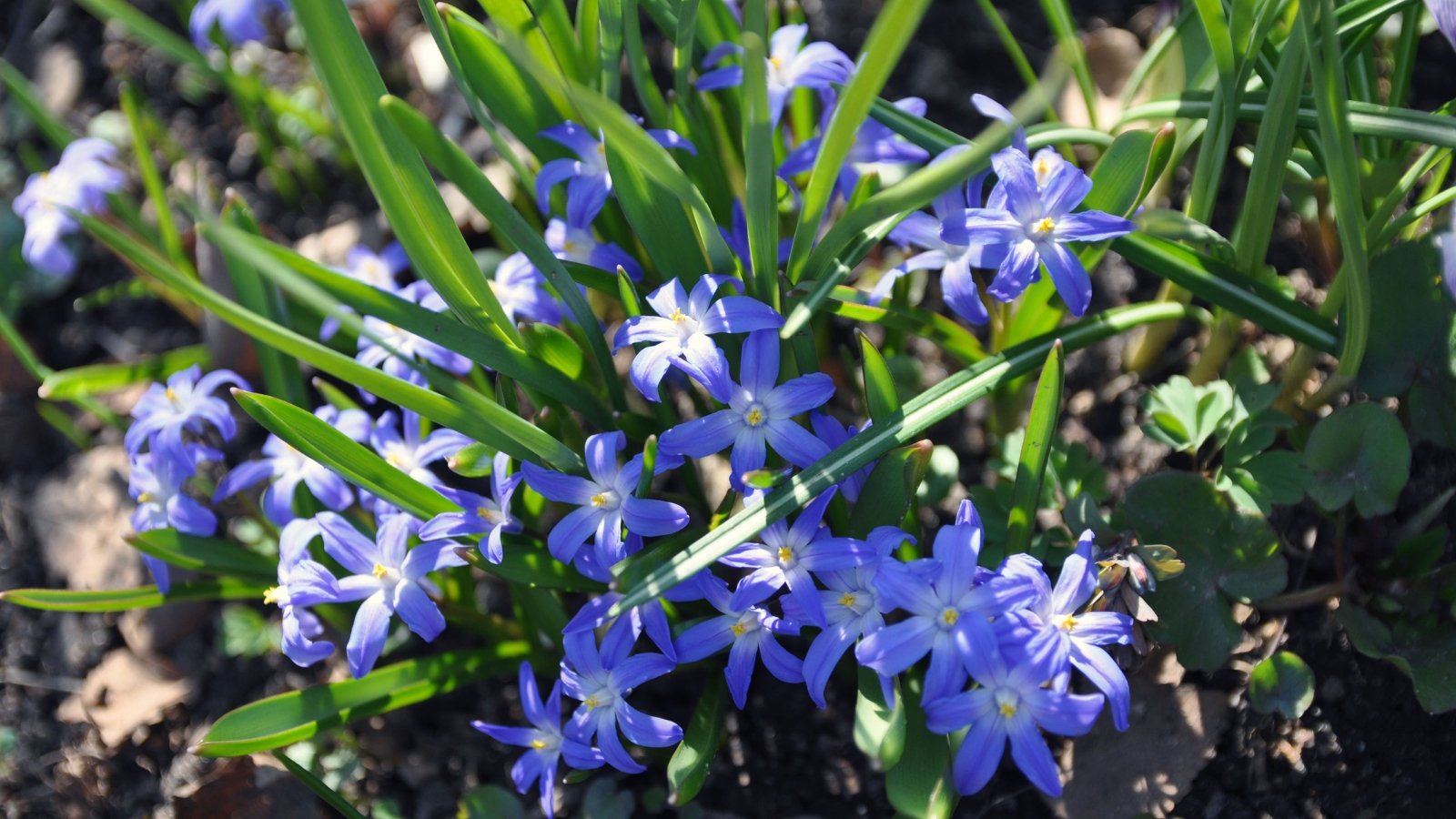
This cold hardy bulb is perfect for freezing regions of America. It’s native to Turkey but thrives in our woodland gardens. You’ll see clusters of star-like blooms erupt below the snow cover during early spring. Flowers range in colors like blue, white, lavender, and pink. They bloom from rosettes of long leaves that resemble daylily foliage.
Glory of the snow is popular, so a few cultivars are common in garden centers. Try ‘Alba’ for white flowers with green leaves. ‘Pink Giant’ and ‘Blue Giant’ are larger varieties that can reach ten inches tall with flowering stems! Choose both to have pink and blue blossoms in your yard, or select the one with your favorite color for a monochrome design.
The glory of the snow propagates itself using seeds and bulbs. Collect seed pods after the blooms fade in late spring and early summer. Conversely, you can divide existing colonies during autumn. Dig up the bulbs and place each one in a new location.
Tulip
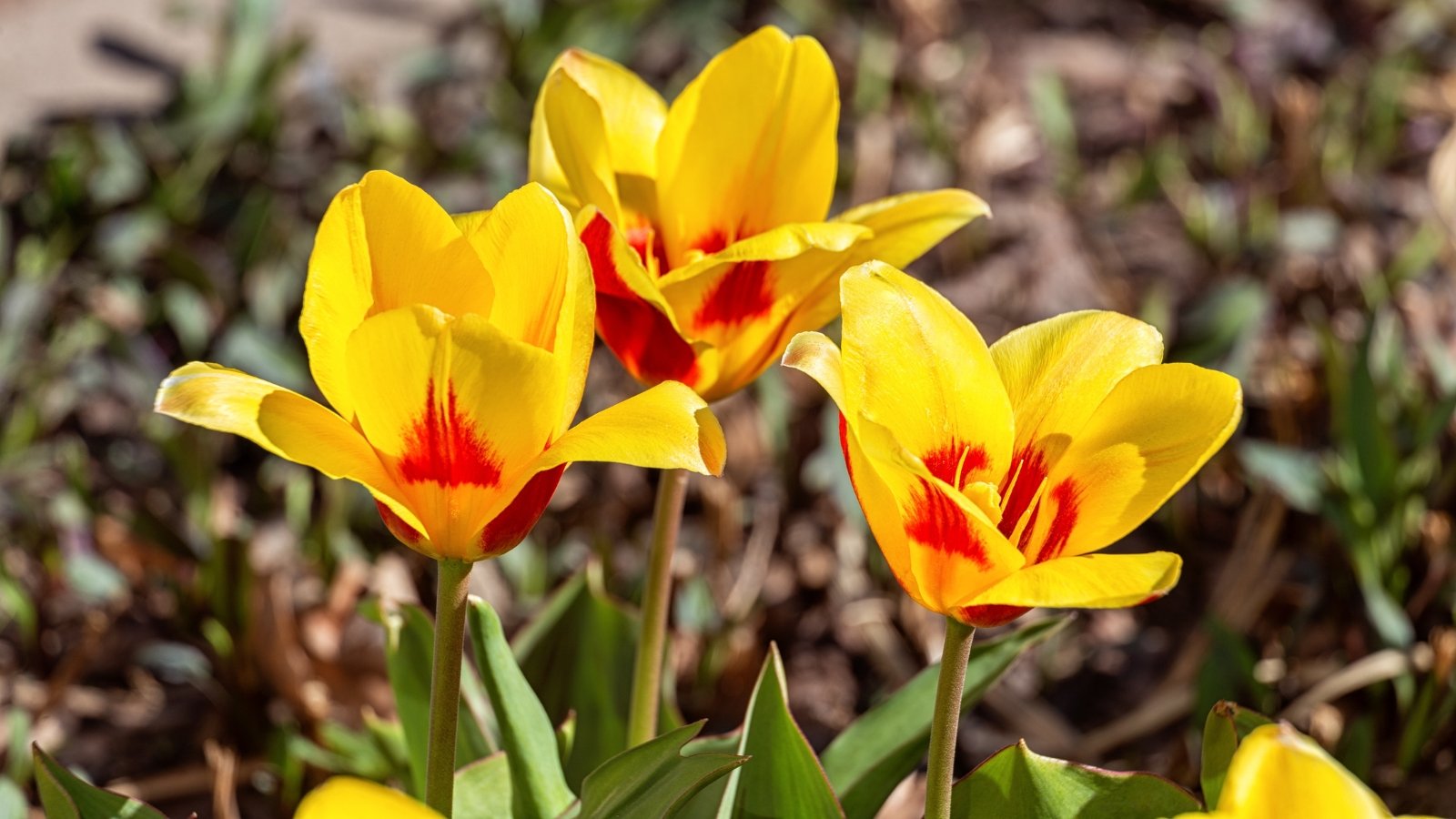
No garden would be complete without some tulips! These familiar bulbs sprout open blossoms on tall stems. They emerge from the soil in early spring a few days or weeks after daffodils do. There are hundreds of types with different flower colors, shapes, and sizes.
Tulips are easy to grow, they create clumps with time, and they’re readily available online and in most garden retail centers. New hybrids emerge from tulip breeders annually with exciting new features. These hybrids are gorgeous, although they’re not as hardy as species tulips.
Opt for species types like Kaufmanniana tulips if you want them to create clumps and naturalize. Hybrids may also survive perennially and spread in USDA hardiness zones 3 through 8 with the right care. Give them porous, rich soil that’s free draining. The biggest threat to tulip health is bulb rot from soggy soil, which you can avoid by watering once the soil dries.
Daffodil
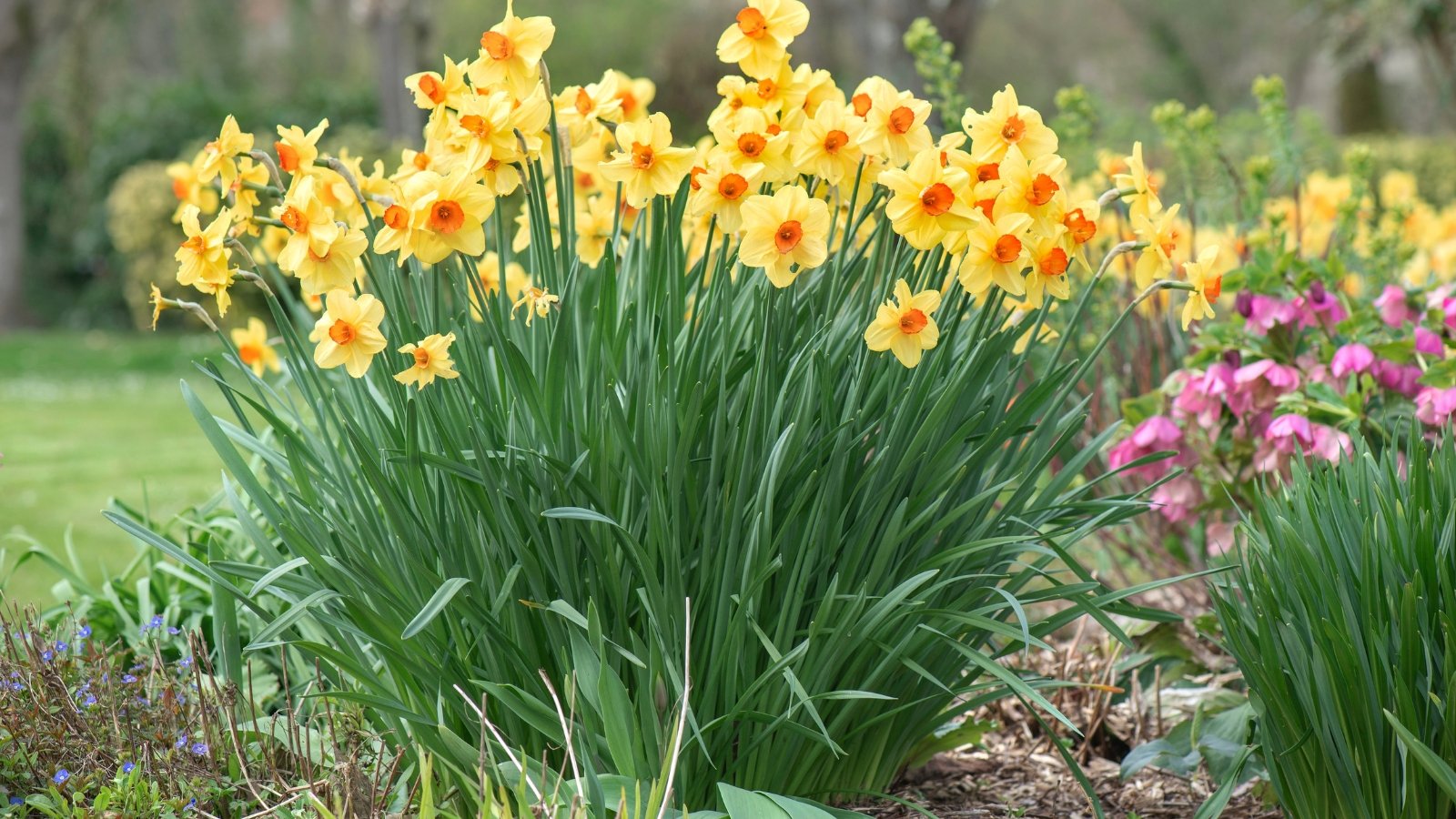
Like tulips, daffodils are perennial bulbs with a long history in ornamental gardens. The most famous ones display bright yellow flowers that look like trumpets. Their genus, Narcissus, comes from their downward nodding habit. In Greek legends, Narcissus was a man who stared at his reflection in a pool of water for too long, so the gods turned him into this nodding flower.
Nowadays, hundreds of daffodil cultivars are available in white, orange, yellow, and red. Some have bicolor blooms, while others exhibit one shade or another. They grow during cool days in early spring, sprouting earlier than tulips. Get them in the ground before your first frost so they have ample time to grow roots before spring.
Tulips naturalize over many years by forming clumps that start from the main bulb. They need cool conditions year-round and will have trouble surviving hot summers in zones 9 and above. Give them well-draining soil and regular water while they grow aboveground, and they’ll bloom for years!
Snowdrop
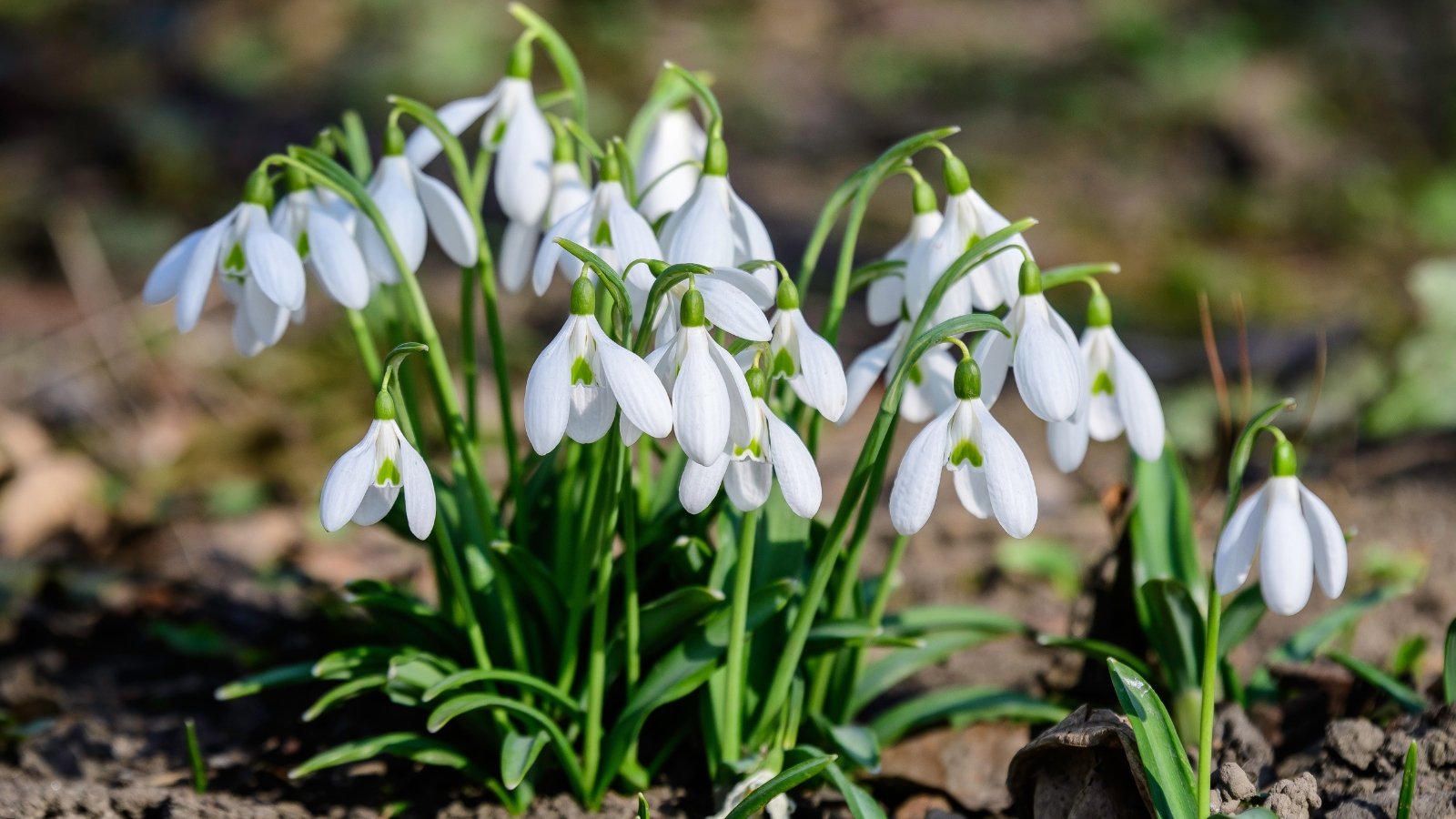
Snowdrops decorate the ground with delicate white blossoms that droop off short stems. They’re one of the earliest blooming bulbs, sprouting before daffodils and tulips! Their name comes from their white blossoms and the fact that they emerge from the soil when snow’s still on the ground in some regions.
Two main species of snowdrops exist, each with dozens of cultivars to their name. For small plants to tuck in between other perennials and annuals, try the common snowdrop, Galanthus nivalis. ‘Viride Apic’ is a unique cultivar of this species with green lines on white petals. Common snowdrops are hardy from zones 2 through 9 and grow best in fertile, thick soil rich in clay or loam.
There’s a gigantic version of the snowdrop, the giant snowdrop! Look for its scientific name Galanthus elwesii on plant tags to verify it’s this type. Giant snowdrops reach a foot tall with blooms one to three inches wide. Although bigger than common snowdrops, they’re slightly less hardy and prefer to grow in zones 4 through 7.
Crocus
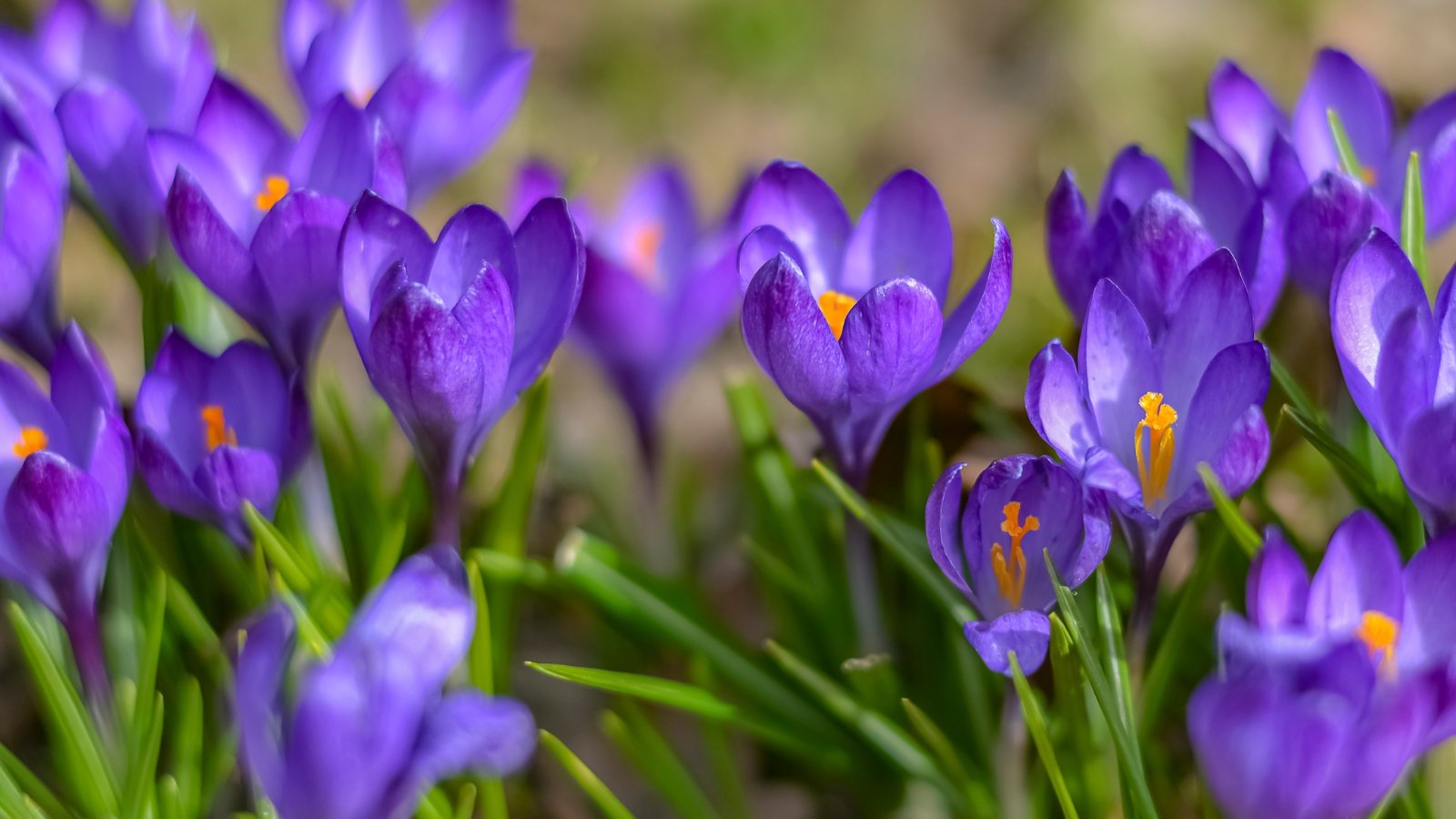
Crocus bulbs are low-growing early spring bloomers like snowdrops. They sprout purple, orange, yellow, or white flowers that you peer down into. They bloom upwards instead of drooping like snowdrops and daffodils. Plant a few bulbs two to three inches deep during autumn, and watch them sprout and multiply into small clumps next spring.
Saffron crocus is one famous species in this genus. You may have heard of this elusive bulb because it’s worth a lot of money! Chefs value the orange stigmas and styles, the flower’s female and male sex organs. They have a unique flavor that lends well to rice, soups, and sauces. The bulb multiplies like ornamental crocus types, making it perfect for ornamental or food gardens.
Crocus spread through underground division and seeds on the soil’s surface. Divide mature clumps every four or five years to multiply more crocus bulbs, or collect and sow seeds that form throughout spring. Leave the foliage after the blooms fade so your plants can collect energy for next year’s flowers.
Winter Aconite
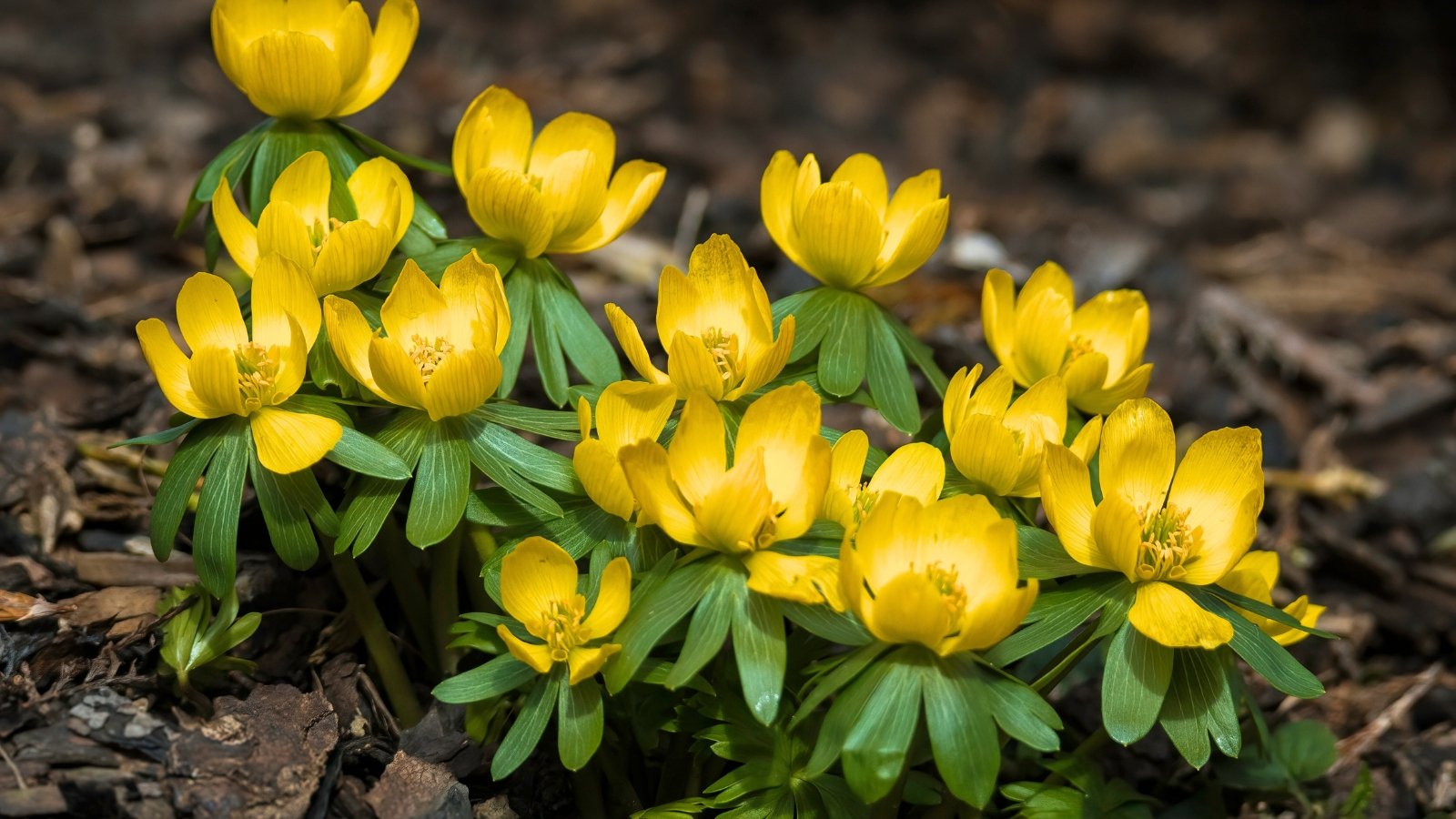
Winter aconite resembles lesser buttercup but is far less invasive. This buttercup family relative opens bright yellow flowers atop green leafy collars. Each stem rises from underground tubers that creep into new spaces underneath the soil. One winter aconite plant will turn into dozens in a few short years.
As its name suggests, winter aconite erupts from the ground in winter or early spring when many other plants hide themselves from stormy weather. Sow seeds in the fall, or divide plants after they finish blooming from late spring through early summer. They need cool conditions to thrive and may struggle perennially above zone 7.
This bulb prefers similar conditions as tulips and daffodils, thriving in moist, organically rich soil while it grows leaves and flowers. It tolerates short droughts in the off-season, although it will suffer in warm zones without frequent irrigation. Use it in shady locations if your garden turns hot during the summer.
Grape Hyacinth
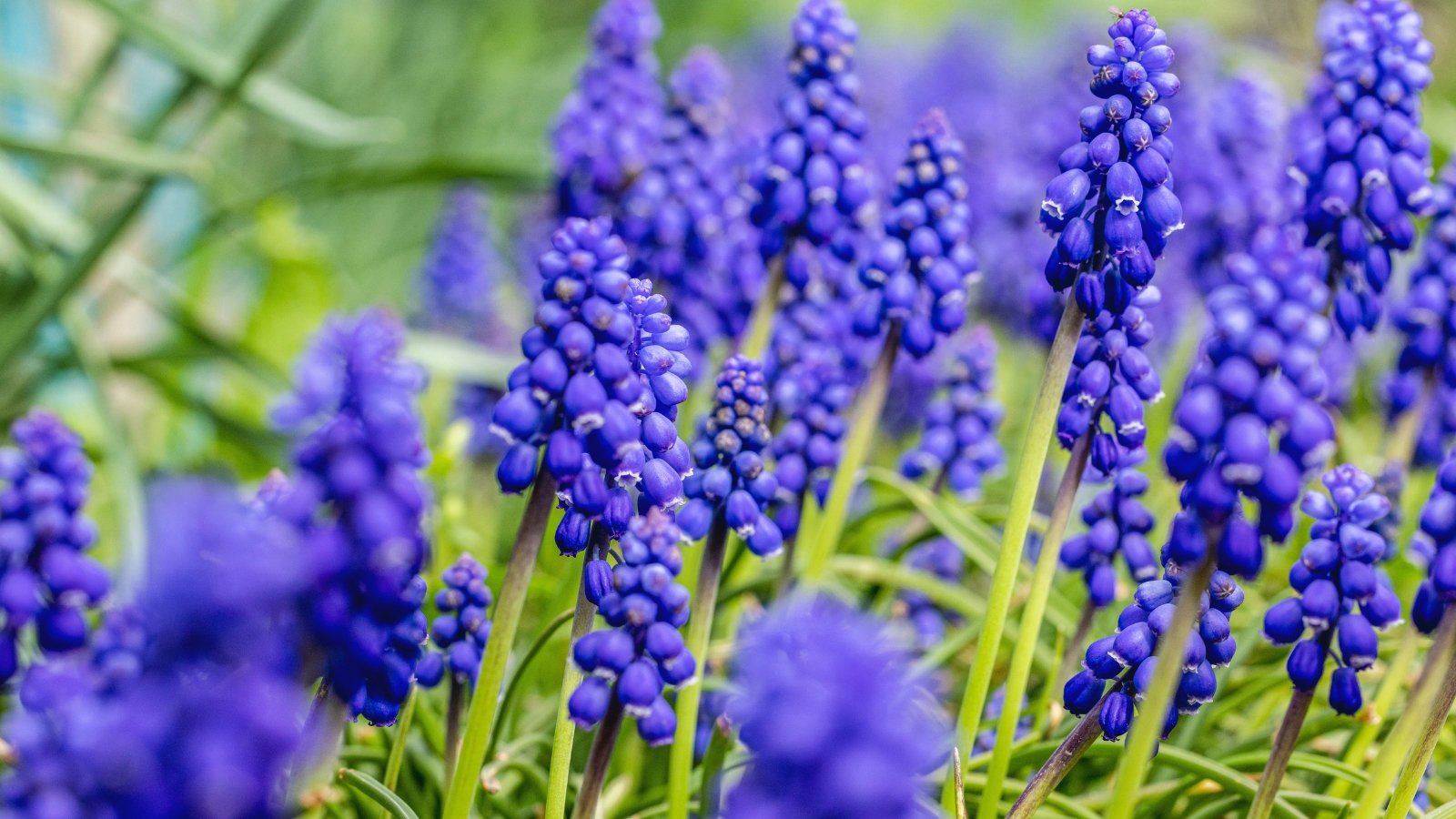
Grape hyacinth spreads more rapidly than most other plants on this list! From its bulbs grow clusters of round purple flowers on short green stems. The flowers resemble grape clusters and hyacinth blooms, hence their name. They spread using seeds and bulbs, quickly covering sites with bare soil.
Grape hyacinth can grow unruly in certain zones if it’s happy. Divide mature clumps after they enter dormancy from late spring through fall to control their spread and to gain new plants for other areas. The bulbs may produce flowers their first year after transplanting.
If using seeds, collect or buy them during the summer and sow them in the fall. They need cold stratification for at least two to three months before they sprout. In extremely cold climates, keep them in the refrigerator during the winter and sow them in spring for better germination results.
Spring Snowflake
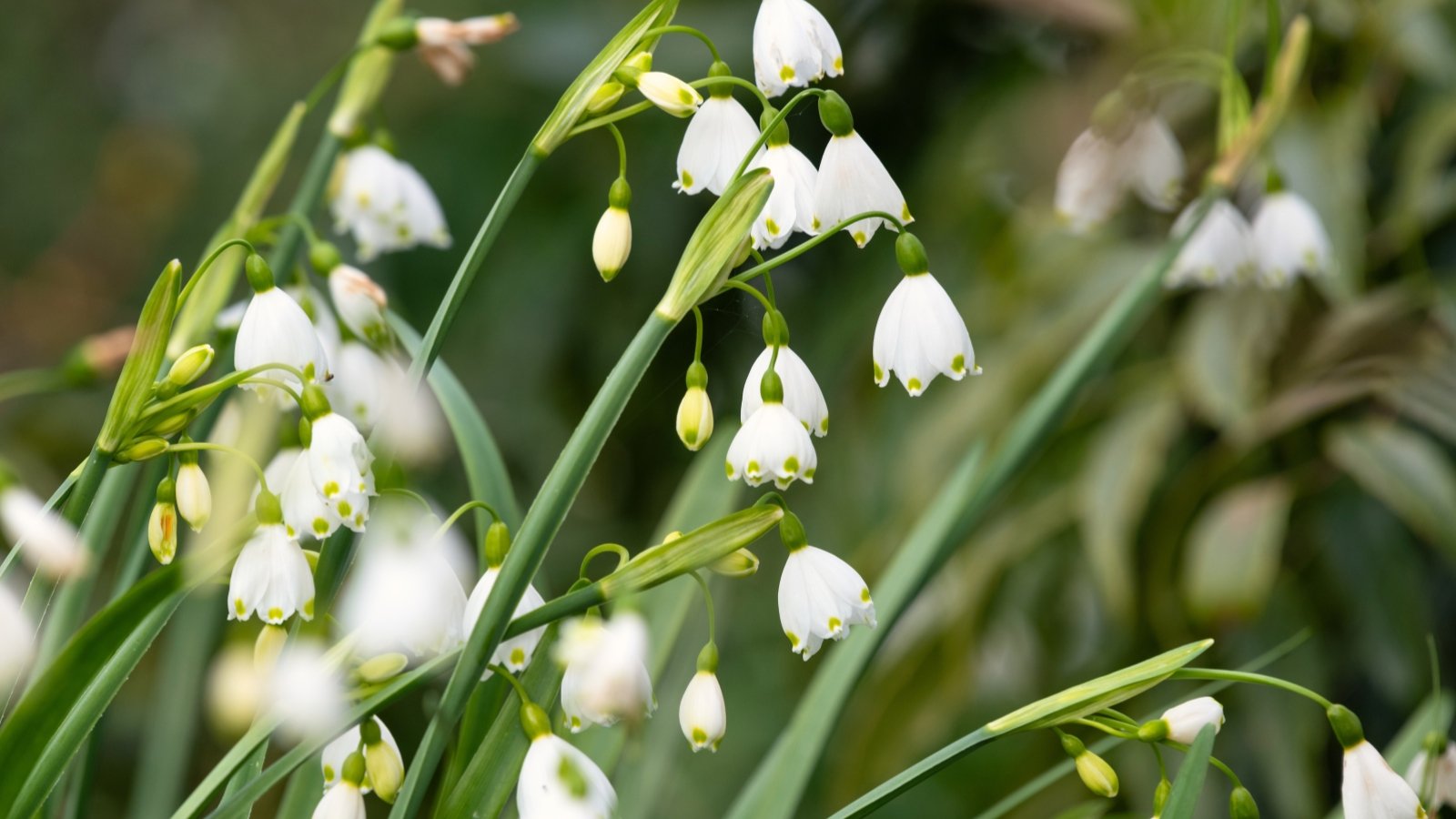
Spring snowflakes resemble common snowdrops with round white blossoms that have green markings on their petals. They grow in similar habitats, have similar leaves, and their blooms look alike! Tell them apart by their stems and how many flowers are on each one. Snowdrops have one flower per stem, while spring snowflakes can have three to six and their stems are hollow.
Spring snowflakes emerge from gardens in late winter or early spring, and they grow best when you plant them during the fall. Bury them three to four inches deep and give them regular water while they grow aboveground.
A similar species is the summer snowflake—it grows under the same conditions but blooms a bit later than the spring snowflake. Leave either species alone after they flower so the leaves can gather energy for next year. Happy bulbs spread rapidly throughout the garden, giving you gorgeous swaths of white petals and green leaves.




